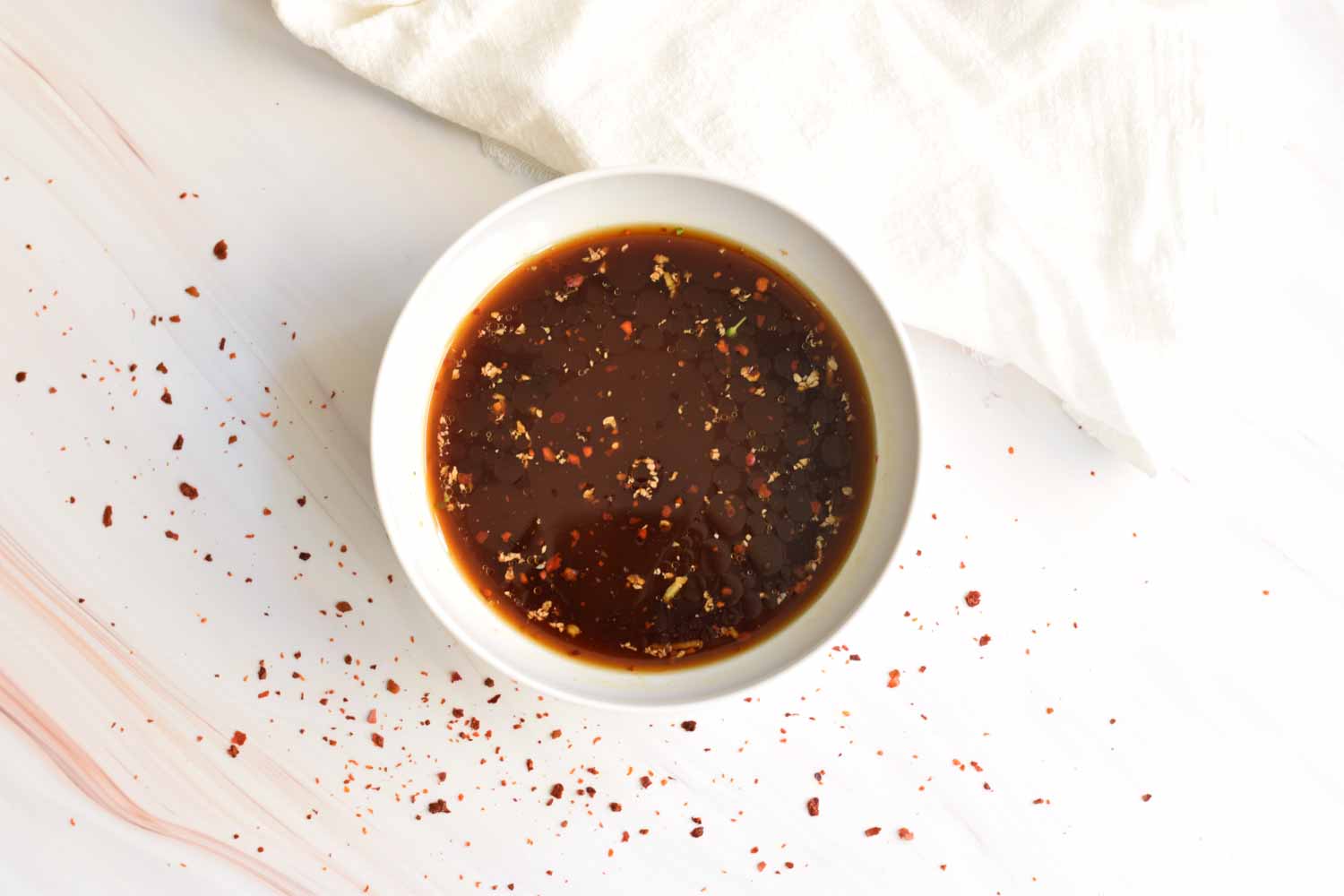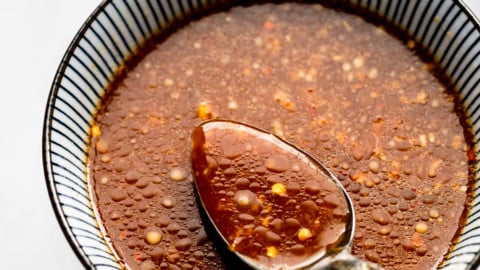
A good stir-fry sauce can make or break your dish, but many store-bought options are loaded with sodium and preservatives. For those watching their salt intake or looking to adopt healthier eating habits, low-sodium stir-fry sauce is a game-changer.
Not only does it allow you to control what goes into your meals, but it also proves that you don’t have to compromise on taste for the sake of health.
In this article, we’ll learn why low-sodium stir-fry sauce is a must-have, the key ingredients that bring out incredible flavors, and guide you through a simple yet versatile recipe.
Why Choose Low-Sodium Stir-Fry Sauce?
1. Health Benefits Of Lower Sodium Intake
Excessive sodium in your diet can lead to high blood pressure, heart disease, and kidney problems. A low-sodium stir-fry sauce helps you enjoy your favorite dishes without the risk of overloading on salt. By swapping traditional soy sauce or commercial stir-fry sauces for homemade alternatives, you can significantly reduce your sodium intake while still enjoying flavorful meals.
2. Avoiding Hidden Additives In Store-Bought Sauces
Many store-bought sauces not only contain high levels of sodium but are also packed with artificial preservatives, colorings, and flavor enhancers. Making your own sauce ensures you’re using wholesome, natural ingredients, giving you full control over the quality and taste.
3. Customizable To Your Preferences
Homemade low-sodium stir-fry sauce allows you to tailor the flavor to suit your taste buds. You can make it sweeter, tangier, or spicier depending on your preference something you rarely get with store-bought options.
Key Ingredients In Low-Sodium Stir-Fry Sauce
A great stir-fry sauce relies on a balance of flavors: salty, sweet, sour, and umami. Here’s how to achieve that balance with healthier, low-sodium ingredients:
1. Low-Sodium Soy Sauce Or Tamari
Low-sodium soy sauce is the backbone of any stir-fry sauce. It provides the umami flavor without overwhelming the dish with salt. For a gluten-freealternative, tamari is an excellent choice.
2. Natural Sweeteners
Instead of refined sugar, opt for healthier sweeteners like honey, maple syrup, or stevia. These add a touch of sweetness to balance the saltiness of the soy sauce and the acidity of other ingredients.
3. Aromatic Additions
Garlic and ginger are essential for adding depth and warmth to your sauce. Freshly minced garlicand grated ginger work best, but powdered versions can be used in a pinch.
4. Acidity For Brightness
Vinegars like rice vinegar or apple cider vinegar, as well as fresh citrus juice (such as lemon or lime), add a tangy kick that brightens the sauce.
5. Broth Base
Instead of water, use low-sodium chicken, vegetable, or beef broth for an extra layer of flavor. Homemade broth is even better because you can control the sodium content.
6. Thickening Agents
Cornstarch or arrowroot powder are ideal for thickening your sauce. They create a silky texture that clings beautifully to your stir-fry ingredients.
7. Optional Add-Ins
For a richer flavor, consider adding a splash of sesame oil or coconut aminos. Red pepper flakes or sriracha can also be added for a spicy kick.
Ingredients
- 1/4 cup low-sodium soy sauce or tamari
- 1/4 cup low-sodium chicken or vegetable broth
- 1 tablespoon rice vinegar
- 1 tablespoon honey or maple syrup
- 1 teaspoon freshly grated ginger
- 1 teaspoon minced garlic
- 1/2 teaspoon sesame oil (optional)
- 1 teaspoon cornstarch or arrowroot powder
- 1 tablespoon water (for dissolving cornstarch)
- Optional: red pepper flakes or a splash of sriracha for heat
Instructions

Low Sodium Stir Fry Sauce
1. Combine The Liquid Ingredients
In a medium bowl, whisk together the low-sodium soy sauce, broth, rice vinegar, honey, and sesame oil (if using). This forms the base of your sauce.
2. Add The Aromatics
Stir in the freshly grated ginger and minced garlic. These aromatics will infuse the sauce with a warm, flavorful kick.
3. Prepare The Thickener
In a small bowl, dissolve the cornstarch or arrowroot powderin 1 tablespoon of water. Mix until smooth with no lumps.
4. Mix Everything Together
Add the cornstarch mixture to the liquid ingredients and whisk well to combine. This will ensure the sauce thickens evenly during cooking.
5. Cook The Sauce
Heat a small saucepan over medium heat and pour in the sauce mixture. Stir continuously for 2-3 minutes, or until the sauce starts to thicken and becomes glossy.
6. Taste And Adjust
Taste your sauce and adjust the flavors as needed. Add a bit more honey for sweetness, vinegar for tanginess, or pepper flakes for spice.
7. Use Or Store
Use the sauce immediately in your stir-fry or let it cool and store in an airtight container in the fridge for up to one week. If you need to store the sauce for longer, you can freeze saucesin freezer-safe containers.
How To Use Low-Sodium Stir-Fry Sauce In Your Cooking
1. For Vegetable Stir-Fries
Toss your favorite veggies, like broccoli, bell peppers, snap peas, and carrots, in the sauce for a healthy, flavorful dish.
2. With Proteins
This sauce pairs beautifully with chicken, beef, shrimp, or tofu. Marinate your protein in the sauce before cooking for even more flavor. For a twist, try using it in place of traditional sauces like Tennessee bbqto create a unique fusion of flavors in your stir-fry dishes.
3. As A Meal Prep Staple
Make a batch of this sauce to use throughout the week. It works great for quick weeknight meals or as a drizzle over roasted vegetables and rice bowls.
FAQs
Can I Freeze Low-sodium Stir-fry Sauce?
Yes, you can freeze the sauce in a freezer-safe container for up to 3 months. Thaw in the fridge and reheat before use.
How Can I Make This Sauce Spicier?
Add red pepper flakes, sriracha, or fresh chili to increase the heat level in the sauce.
Can I Replace Cornstarch With Another Thickener?
Yes, arrowroot powder or tapioca starch are great gluten-free alternatives to cornstarch.
Is Low-sodium Soy Sauce The Same As Tamari?
No, tamari is a gluten-free soy sauce alternative. While both are low in sodium, tamari often has a richer flavor.
How Long Can I Store This Sauce?
Store the sauce in an airtight container in the fridge for up to one week.
Final Words
Low-sodium stir-fry sauce is a flavorful and healthy alternative to traditional sauces, making it a perfect addition to your kitchen.
By using wholesome ingredients like low-sodium soy sauce, natural sweeteners, and fresh aromatics, you can create a versatile sauce that enhances any dish.

